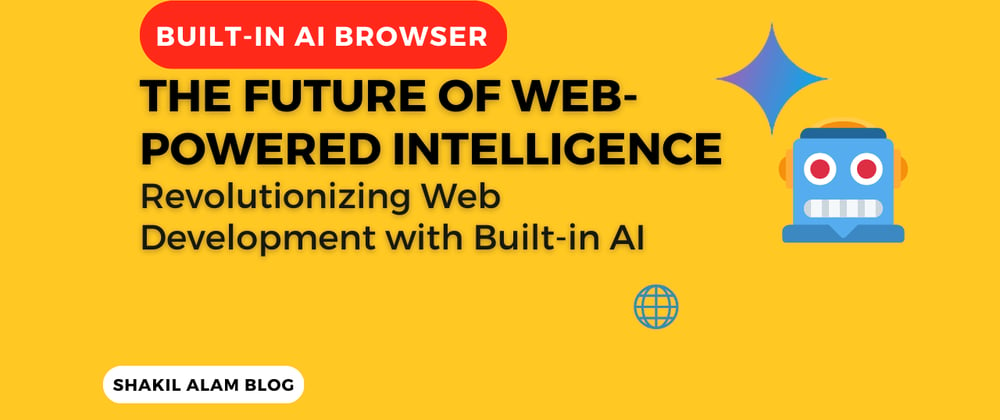Artificial Intelligence (AI) is revolutionizing the web, but integrating AI models into websites has been challenging due to their massive size and the complexity of deployment. To address this, browsers are now introducing built-in AI capabilities, allowing developers to leverage powerful models like Google's Gemini Nano directly within the browser.
What is Built-in AI?
Built-in AI refers to AI models integrated into web browsers, enabling websites and web applications to perform AI-powered tasks without relying on server-side processing. AI features can run locally on users' devices, leading to improved performance, better privacy, and seamless experiences.
Key Benefits for Developers:
- Easy Deployment – No need to manage or download large AI models.
- Hardware Acceleration – Optimized for GPUs, NPUs, and CPUs for maximum efficiency.
- Privacy & Security – Local execution ensures sensitive data stays on the device.
- Better User Experience – Reduced latency results in faster AI responses.
- Offline Functionality – AI features work even without an internet connection.
How Built-in AI Works
Built-in AI is powered by foundation and expert models directly integrated into the browser. Developers can access these models using task APIs, such as:
- Translator API – Enables instant language translation.
- Summarizer API – Provides quick summaries of text content.
- Writing Assistance – Enhances content creation with rephrasing and grammar correction.
- Exploratory APIs – Allows for local prototyping of AI use cases.
Hybrid AI Approach
While built-in AI is ideal for many tasks, some complex operations still require server-side AI. A hybrid approach allows:
- On-device AI for real-time, private, and offline capabilities.
- Cloud AI for handling large-scale computations and diverse model support.
- A graceful fallback mechanism for devices that lack AI processing power.
Debugging Built-in AI Issues
Sometimes, the model may return an unexpected error message or an incorrect response. To debug such issues, you can use the special Chrome page:
chrome://on-device-internals/
In particular, the Event Logs tab can help pinpoint where the problem occurred. For example, consider the following scenario shared by Thomas Steiner via the Chrome Built-in AI Early Preview Program:
const session = await ai.languageModel.create({
systemPrompt: "You are an API endpoint that returns rhymes as JSON for an input word."
});
await session.prompt([
{ role: "user", content: "house" },
{ role: "assistant", content: "{\"input\": \"house\", \"output\": \"mouse\"}" },
{ role: "user", content: "file"},
]);
Expected response: { "input": "file", "output": "pile" }
However, the actual response was an empty JSON array []. Upon debugging, it was discovered that the model did not correctly interpret the structured JSON format. Instead, it processed the input as an unhelpful [object Object],[object Object],[object Object] representation.
Getting Started with Built-in AI
- Join the Early Preview Program – Gain access to experimental AI APIs and provide feedback.
- Use Chrome AI Task APIs – Start integrating features like translation and summarization into your web applications.
- Experiment with Exploratory APIs – Test AI capabilities locally before full deployment.
- Leverage the Google AI Client SDK – Implement AI features using JavaScript SDK for seamless backend integration.
FAQs
1. What devices support built-in AI?
Most modern desktops and laptops support Gemini Nano and other built-in AI models.
2. Can I use built-in AI offline?
Yes! Many AI-powered tasks can run without an internet connection.
3. How does built-in AI improve privacy?
Since AI processing happens on the user's device, sensitive data remains private and is not sent to external servers.
4. Will built-in AI replace cloud AI?
Not entirely. While many tasks can be handled locally, complex models may still require cloud-based AI processing.
The Future of AI in Browsers
Built-in AI is an exciting step towards a smarter, more efficient web. As more browsers adopt these capabilities, developers will have powerful tools at their disposal to enhance user experiences without the complexity of deploying massive AI models.
Ready to explore? Start experimenting with built-in AI today and bring intelligent features to your web applications with ease!







Top comments (0)